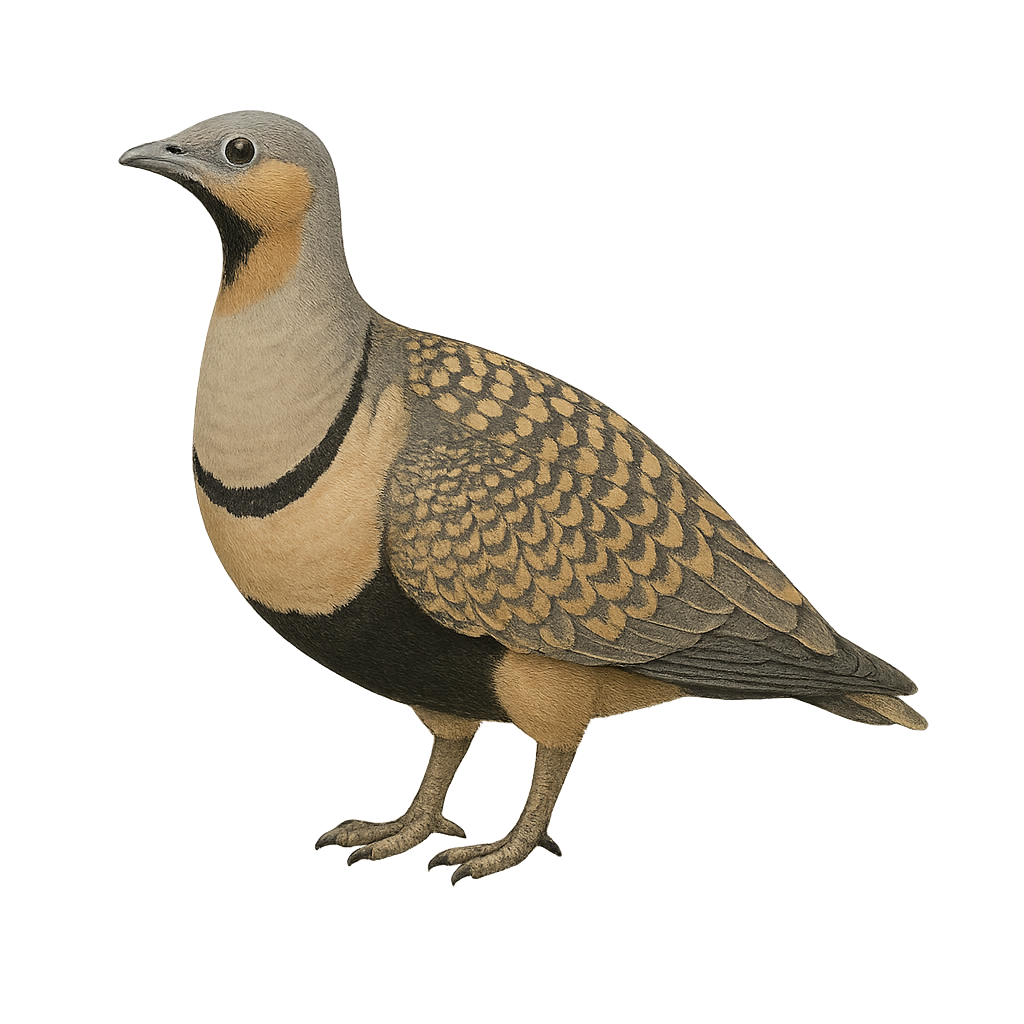Your wildlife photography guide.
Explore the black-bellied sandgrouse in detail, study its behavior, prepare your shots.
Where to observe and photograph the black-bellied sandgrouse in the wild
Learn where and when to spot the black-bellied sandgrouse in the wild, how to identify the species based on distinctive features, and what natural environments it inhabits. The WildlifePhotographer app offers tailored photography tips that reflect the black-bellied sandgrouse’s behavior, helping you capture better wildlife images. Explore the full species profile for key information including description, habitat, active periods, and approach techniques.
Black-bellied Sandgrouse
Scientific name: Pterocles orientalis

IUCN Status: Least Concern
Family: PTEROCLIDAE
Group: Birds
Sensitivity to human approach: Suspicious
Minimum approach distance: 10 m
Courtship display: April to May
Incubation: 21-23 jours
Hatchings: April to June
Habitat:
Arid steppes, deserts, semi-arid plains
Activity period :
Primarily active during the day, with peak activity in the morning and late afternoon.
Identification and description:
The Pterocles orientalis, or black-bellied sandgrouse, is a medium-sized bird known for its cryptic plumage that blends seamlessly into arid landscapes. Males feature a distinctive black belly, contrasting with their sandy-brown plumage. Females are duller, providing effective camouflage during nesting. This bird is primarily terrestrial, feeding on seeds and dry vegetation. It is often seen in flocks, especially around water sources at dawn and dusk. Its flight is swift and direct, often accompanied by noisy wingbeats.
Recommended lens:
400 mm – adjust based on distance, desired framing (portrait or habitat), and approach conditions.
Photography tips:
To photograph the black-bellied sandgrouse, focus on the golden hours of morning or evening when the light is soft and the birds are active around water sources. Use a 400mm or longer telephoto lens to capture details without disturbing them. Maintain a distance of at least 10 m to avoid scaring them away. Be patient and discreet, using a camouflage net if necessary to blend into the environment.
The WildlifePhotographer App is coming soon!
Be the first to explore the best nature spots, track rutting seasons, log your observations, and observe more wildlife.
Already 1 439 wildlife lovers subscribed worldwide

